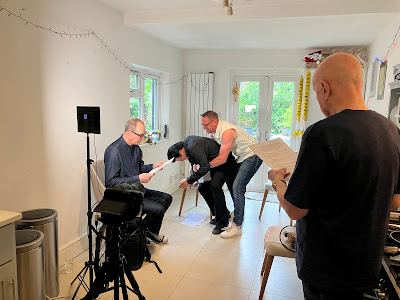Hello fight fans! Absolutely thrilled to announce that the wonderful Johny Brown has invited The Howling, AKA Howlround and me, to appear on his late-night Resonance 104.4 show ‘Bad Punk’ this Friday 25 April.
In fact, thanks for Johny’s kindness, for 90 minutes The Howling will be the ENTIRE show.
I haven’t done any live radio in many years, not since my 'Hollingsville' series for Resonance back in the day, so am looking forward to it with that old familiar mix of exhilaration and sheer terror.
The Howling will be presenting a version of a track from our upcoming album from The Tapeworm, ‘Be Quiet In This Church’ and will also be performing a one-off live collaboration with members of The Band of Holy Joy. There may be other surprise guests – it’s live and spontaneous, so anything can happen – but anyone who’s seen The Howling perform will know that. I didn’t really have suitable pictures to go with this post, so here are a few extra shots of me and Howlround performing at the launch event for my Strange Attractor Press book Paradise at The Horse Hospital a few months back. We will be playing a recording of this reading/performance as part of the show.
'Bad Punk' starts at 22.00 on Resonance 104.4 FM on Friday 25 April and finishes at 23.30 – so turn on, tune in and pass out. We’ll probably be right behind you.
You can find Resonance 104.4 FM by clicking here
Pictured above:
KH and Howlround at The Horse Hospital - photos by @lahollings


































